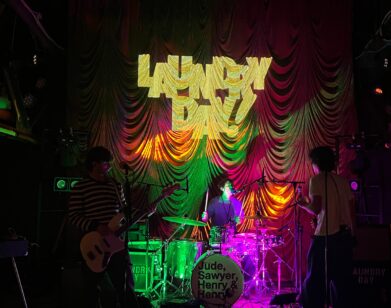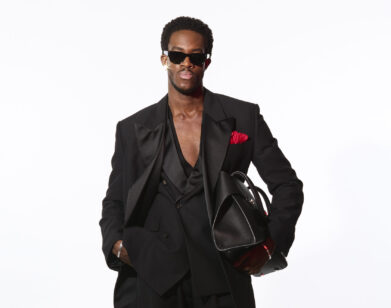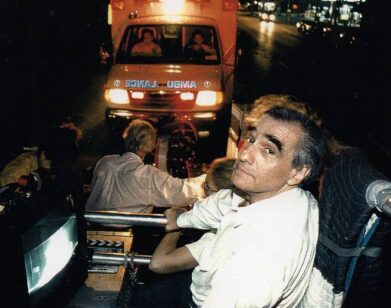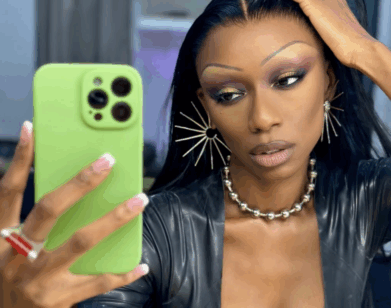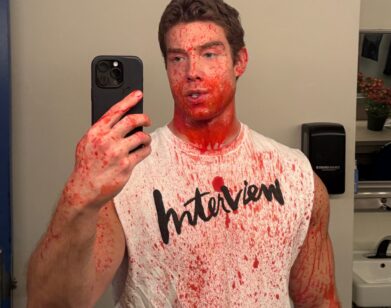Standing at the Top: Photographer Mary McCartney
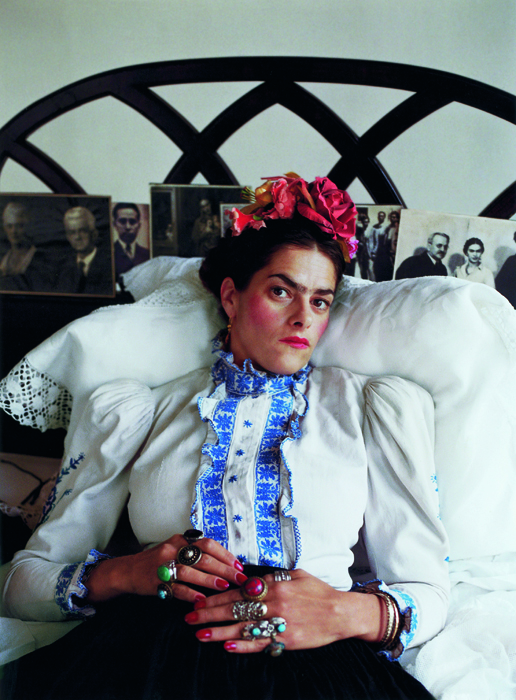
TRACEY EMIN AS FRIDA KAHLO, LONDON 2010.
Mary McCartney walks back and forth through the Stanley Wise Gallery in the SoHo neighborhood of New York, where a series of her photographs is on view. She’s slim and unassuming as she answers questions about her pictures, which is a tight group of works selected from her first book, From Where I Stand (Thames & Hudson). Asked about the sale of a Kate Moss portait, she glides through a hall and admits to no one in particular, “I sort of want to keep it, but I know I can’t.”
“Even the landscapes are personal,” she says of the 160-some photographs in the book, which span 15 years and multiple series and genres. In this case, the personal is quite glamorous: “There’s moments from Scotland in the very beginning, a nice one of mum and dad sort of skipping up the beach there, which I love, because it could be the Maldives. To have a beautiful sandy beach in Scotland seems like such a contradiction.” McCartney grew up the daughter of Paul and Linda, and is the natural archivist of the lifestyle of one of the 20th Century’s best known love stories. Amidst all the attention, it seems natural that McCartney speaks frequently about her interest in capturing the world as it releases a sigh. Backstage photos of the corps de ballet at the Royal Opera House, a project she worked on at length between 2003 and 2006, are woven throughout the glossy 200-page book, inserting moments of hidden frustration during a rehearsal or overt elation after a show. Her dancers aren’t performing for her, but rather let her into their universe with effortless fluid grace—and the viewer gets to watch as they wash their bloodied feet or apply their final sequins.
McCartney is fascinated by the before and after. On one of her favorite portraits, McCartney talks about shooting Tracey Emin as Frida Kahlo setting her up first in her London studio, on her bed, adopting the pose and costume of the elder artist and forebear. “I styled it with reference pictures to Frida’s bed and I think she felt a real connection with Frida, so there’s an intensity in her expression. And I think we really connected on that, so for me, those kinds of shoots are really enjoyable, when you connect with your sitter.” That connection can’t be learned, but McCartney allows that she gleaned her style through watching her mother, also (famously) a photographer. “She would relax her sitters, which I think is one of the most difficult things.”
Photos of Paul McCartney casually appear throughout the volume, showing him horseback riding in California or playing with paint in Willem de Kooning’s studio. “I love taking pictures of him, and I think what’s nice about taking pictures of family, whether it’s Dad or [sister, designer] Stella, is that they’re quite relaxed with me in front of the camera. And really with portrait photography, part of the challenge is to form a relationship and a trust so that they don’t feel too guarded. My dad, he’s quite fun—he likes those unexpected pictures as well, so he’ll mess around and go wandering with me to get his picture taken.”
Other portraits include Dennis Hopper; a hypnotizing Helen Mirren gripping her chest and exposing her naughty little tattoo; Gwyneth Paltrow in Gaultier as Madonna; and the Material Girl herself, drinking champagne with Emin. Kate Moss appears in various contexts, not always on the runway but ever the model, and Elizabeth Jagger is caught laughing, beautiful and natural, oozing the vibrant energy McCartney so adores. “It’s one of those sort of, caught, informal moments which is what the book is all about.”

